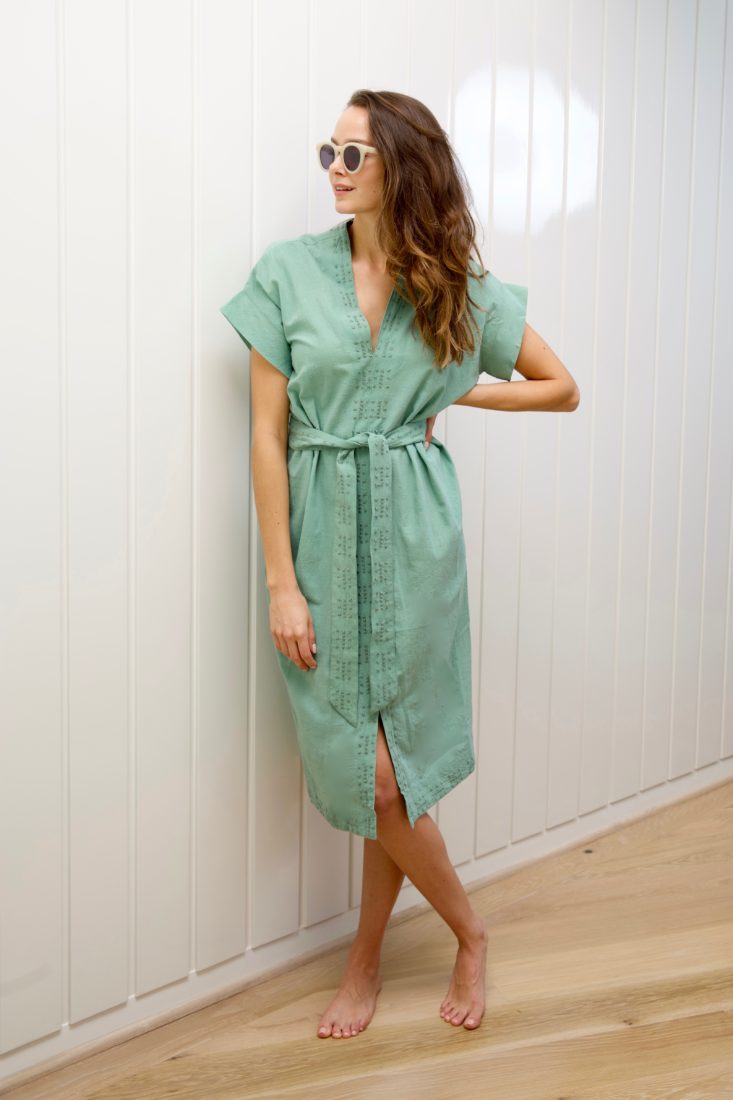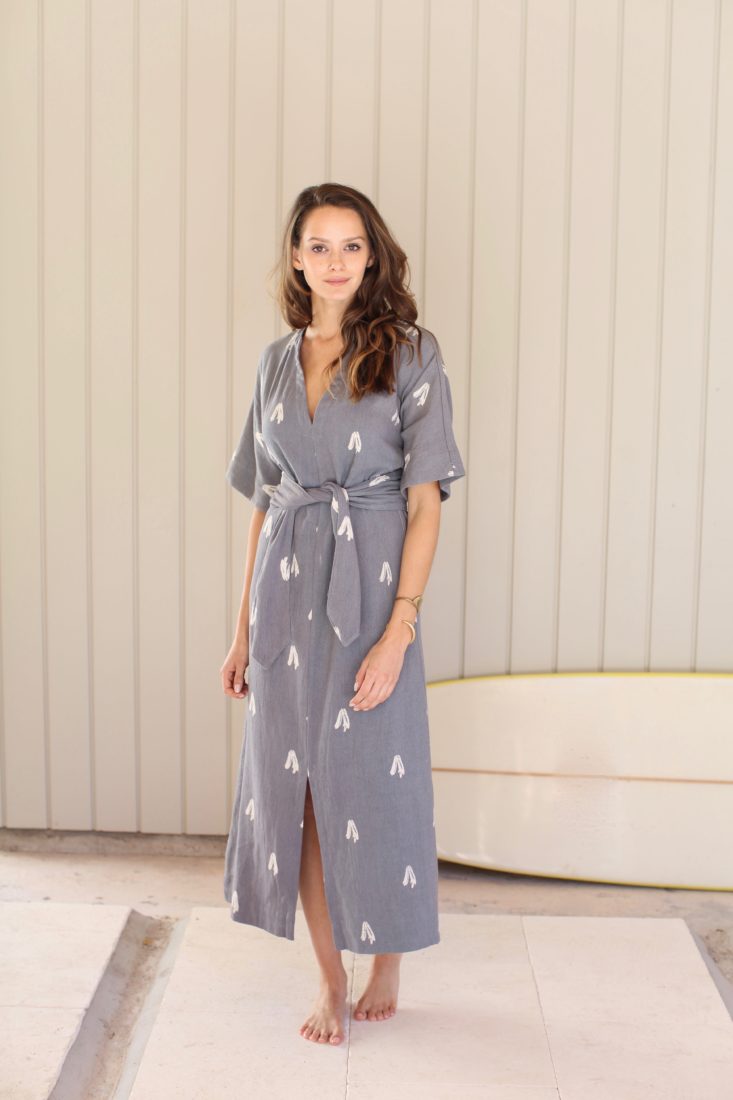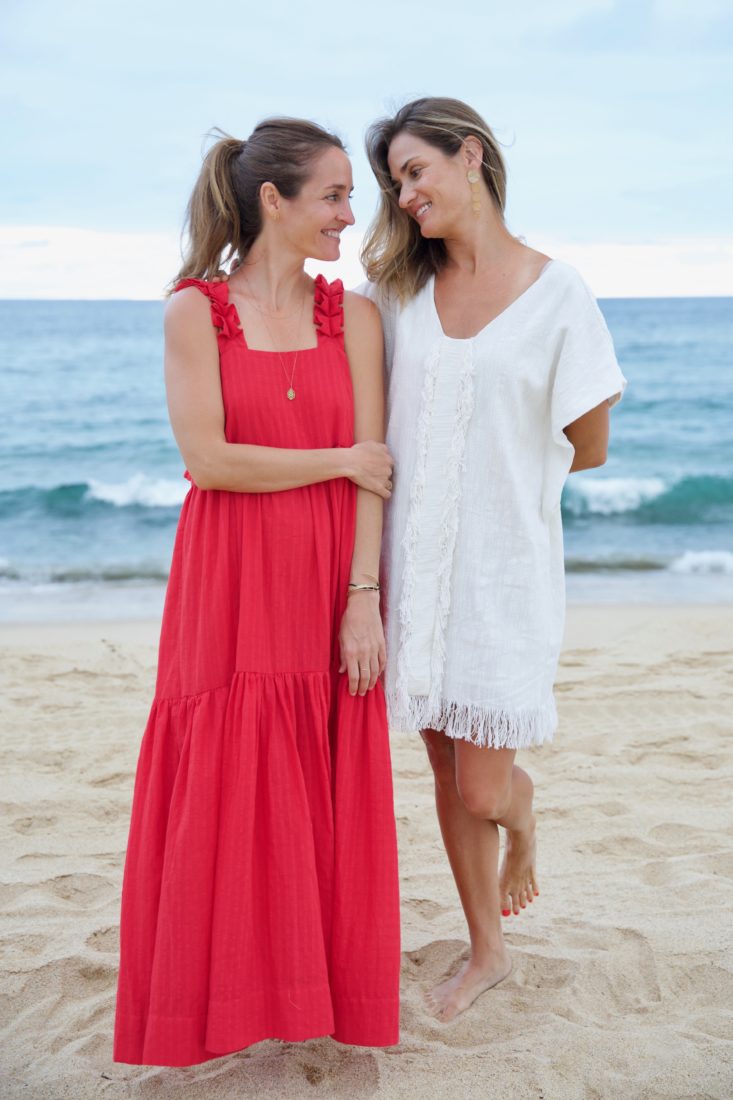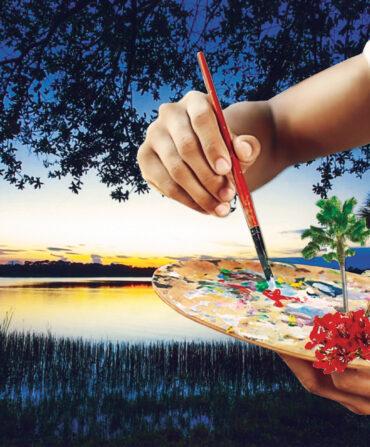Long, breezy dresses can almost serve as air-conditioners during the summer—they flow and swirl, don’t stick or cling. You can dress them up or down, and never have there been so many pretty patterns and fabrics to choose from: ruffles, florals, seersucker, cotton, linen, stripes, block prints, silk, denim. But some of the loveliest summer frocks of all come from the Houston-based label Mirth.
Launched by the Texas sisters Katie McClure and Erin Breen in 2016, the line’s dresses, caftans, and cover-ups come in feather-light cotton, flattering cuts, and stunning colors. Even better, inspired by the textiles of India, the sisters collaborate with artisans there to create the pieces, providing ethical employment and sustaining the craftwork of the weavers and printers. They also donate a portion of sales to the communities in which their artisans live and work.
Here, the sisters reveal why they believe every woman should own at least one caftan, how travel changed their worldviews, and how their mother inspired Mirth’s new collection.
You were both working in other industries when the idea came to you to start Mirth. When did the lightbulb go off?
Katie McClure: I was rethinking my life, and I decided to travel to Bali. I loved the caftans there, but there was a disconnect between the fast-fashion versions available in the markets and handmade textiles. The idea followed me for years, eventually to India.
Erin Breen: It went off for me when Katie asked me to join her on a trip to India. She told me about her idea to design caftans, and I was immediately interested. When I was pregnant I wore them all the time. They are so comfortable and easy to style without looking frumpy. We started talking more and more about the idea and began meeting with textile artisans in India.
KM: We had this dreamy day of meetings in Jaipur and scouring basements and markets full of antique and new textiles. It ended with an elephant ride. It was pure mirth. We completely fell in love with the culture and the people in India. They make you feel like family immediately. Heritage Indian textiles are works of art, and we knew it was important to keep the traditions alive by providing work for the craftsmen.

Photo: Jenny Antill
A midi caftan from Mirth.
Which techniques do the artisans typically use for each collection?
KM: We use multiple techniques, but one notable one is called jamdani, which is an ancient handloom weaving technique practiced in the rural villages outside of West Bengal. The weavers create patterns with a needle and thread as the fabric is woven on a handloom, thread by thread. It is all done by sight and the pattern varies from weaver to weaver. It can’t be replicated on a machine and it creates a beautiful floating effect on the fabric.
EB: We also work with seventh-generation master printers in the village of Bagru, where block printing has been practiced for three hundred years.
What’s the secret to creating a dress that feels good even in 90-degree weather?
KM: Living in Houston, we were all too familiar with the feeling of not wanting clothing to touch your body during the day. One of our most used fabrics is called khadi, which means the yarns are handspun and the fabric is also handwoven, creating an absorbent fabric that’s less dense and allows air to flow through to keep you cool.

Photo: Jenny Antill
A long block-printed khadi cover-up caftan.
You care about being socially conscious. How does your work with the craftspeople benefit them?
EB: Much of the work is done in their homes, and the whole family is involved in some part of the process, from preparing yarns to prepping the loom. It allows them the income to remain in their villages as opposed to leaving home for grueling and low-paying industrial work.
It can be scary to start a brand new business from scratch. Was there a moment you breathed a sigh of relief?
KM: I remember our showroom in Los Angeles calling the day our first samples arrived to start selling. They said Anthropologie had been in that afternoon and said: “We want that!” I didn’t think it would pan out, but seeing a photo of Mirth in the store that spring was incredible. Goop was another pivotal moment. Selling our pieces on Goop was a top goal. There were tears involved for sure.
Several new pieces just landed on the site and your fall collection is underway. Who are your biggest influences?
EB: Our mother, Molly, and grandmother have been sources of inspiration since the beginning. Our next collection, for fall, is inspired by photos of our mom in the seventies in floral prairie dresses. It’s full of high neck collars and ties and beautiful new handloomed silk stripes.








